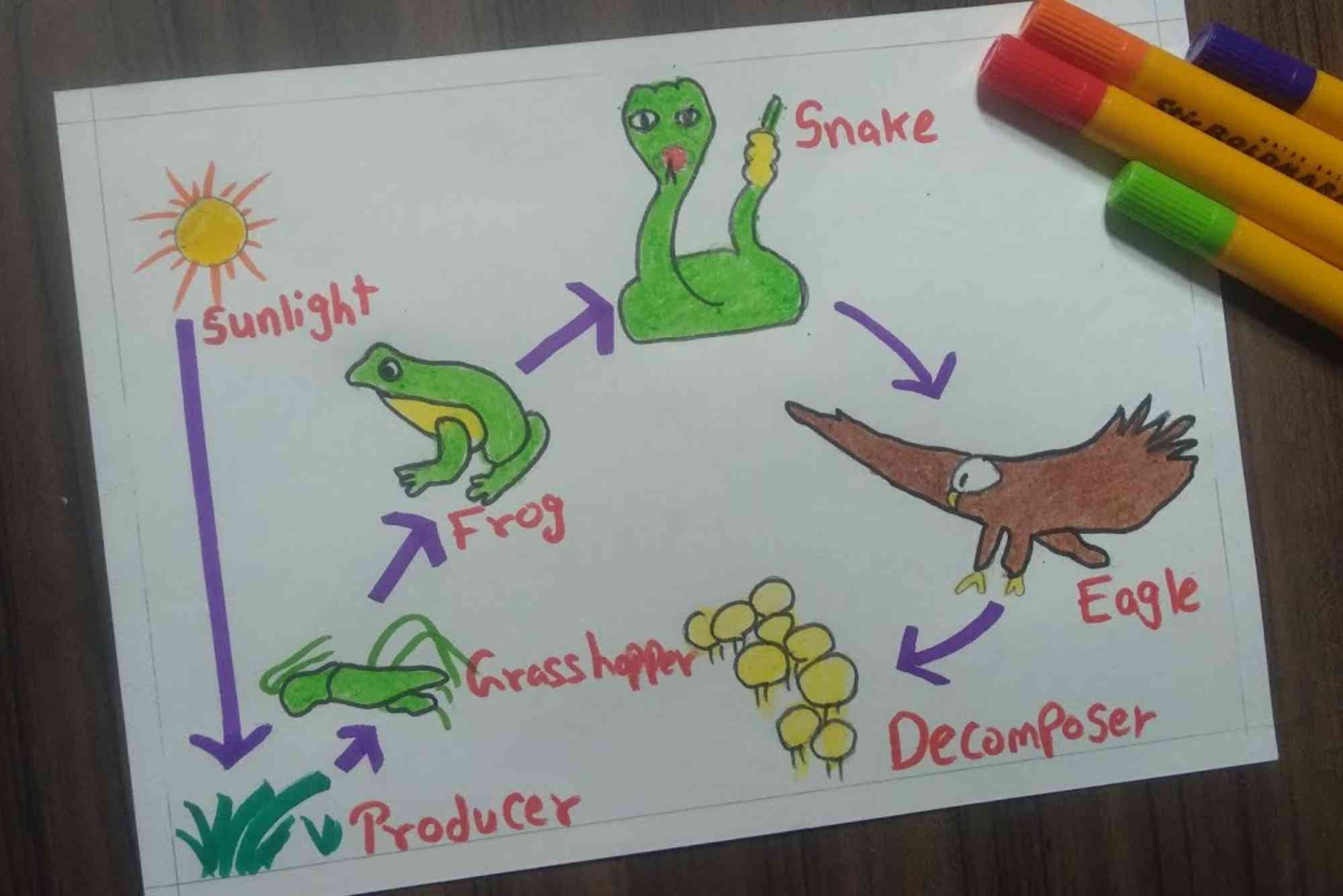Understanding the Food Chain with Easy Diagrams
The world around us is full of living organisms that depend on each other for survival. From the tiniest insect to the mightiest predator, all living beings are connected through a system of energy transfer known as the food chain. This simple yet powerful concept is best understood with the help of a food chain diagram, which visually shows who eats whom in an ecosystem.
In this blog post, we’ll explore the components of a food chain, look at simple diagrams to make learning easier, and explain why understanding food chains is essential for both students and nature lovers alike.
What Is a Food Chain?
A food chain is a sequence that shows how energy and nutrients flow from one organism to another. It begins with producers, typically plants, and ends with top predators. In between, various levels of consumers help pass energy along the chain.
The food chain diagram is a helpful visual that maps this flow of energy in a clear, step-by-step layout. It helps explain who eats what in a particular ecosystem.
The Four Main Parts of a Food Chain
Producers
Every food chain starts with producers, usually green plants. They make their own food using sunlight through a process called photosynthesis. Without producers, no energy would enter the food chain.
Primary Consumers
These are herbivores that eat the producers. Common examples include rabbits, deer, and insects.
Secondary Consumers
Secondary consumers feed on primary consumers. These are usually small carnivores or omnivores like frogs, snakes, or birds.
Tertiary Consumers and Apex Predators
At the top of the food chain are tertiary consumers. They eat other carnivores and are rarely eaten themselves. Examples include lions, sharks, and eagles.
Why Are Food Chain Diagrams Important?
A food chain diagram helps break down complex ecological relationships into easy-to-understand visuals. For young learners, teachers, and even researchers, it’s a foundational tool. These diagrams show not only what each organism eats but also how energy moves through the environment.
They are especially useful in helping students visualize concepts like energy transfer, the role of decomposers, and the balance of ecosystems.
Types of Food Chain Diagrams
Simple Linear Food Chain
This is the most basic type. It shows a direct line from producer to apex predator. For example:
Grass → Grasshopper → Frog → Snake → Eagle
In this linear diagram, each step represents a transfer of energy. It’s straightforward and ideal for beginners learning the basics of food chains.
Terrestrial Food Chain Diagram
This kind focuses on land-based ecosystems. An example might include:
Plant → Rabbit → Fox
Each arrow in the diagram points to the organism that does the eating, showing the flow of energy.
Aquatic Food Chain Diagram
This type shows energy transfer in water environments. A simple version would look like this:
Algae → Small Fish → Bigger Fish → Seal
These diagrams are essential when studying ocean, lake, or river ecosystems.
Trophic Levels in a Food Chain Diagram
The position of an organism in a food chain is called its trophic level. Here’s how they are categorized:
- Level 1: Producers (e.g., grass, algae)
- Level 2: Primary consumers (e.g., rabbits, zooplankton)
- Level 3: Secondary consumers (e.g., frogs, small fish)
- Level 4: Tertiary consumers (e.g., snakes, large fish)
- Level 5: Apex predators (e.g., lions, sharks)
Each trophic level has less energy than the one before it. That’s because energy is lost as heat during metabolic processes.
Real-Life Examples with Easy Food Chain Diagrams
Let’s look at a couple of everyday examples to make things even clearer.
Example 1: Grassland Food Chain
A typical food chain diagram from a grassland ecosystem might include:
Grass → Grasshopper → Bird → Hawk
This example highlights the role of herbivores and predators in balancing populations.
Example 2: Pond Ecosystem
A pond food chain might look like this:
Algae → Tadpole → Fish → Heron
This diagram demonstrates energy flow in a freshwater habitat, showing how even small organisms play vital roles.
The Role of Decomposers
While not always shown in a basic food chain diagram, decomposers like fungi and bacteria are essential. They break down dead organisms and recycle nutrients back into the soil, allowing plants to grow and the cycle to continue.
In more advanced diagrams, decomposers are included at every level, showing that all life eventually returns to the earth.
Differences Between a Food Chain and a Food Web
A food chain is linear, showing one path of energy transfer. A food web, on the other hand, is more complex. It shows all the feeding relationships in an ecosystem.
In reality, animals often eat more than one type of food. A fox might eat both rabbits and birds, and a bird might eat insects and seeds. A food web captures this complexity, while a food chain diagram simplifies it for easier understanding.
How Human Activities Impact the Food Chain
Disruptions like pollution, deforestation, and overfishing can break natural food chains. If one species disappears, others that depend on it may struggle or vanish as well.
For example, if overfishing removes too many small fish, larger predators like seals and dolphins may not get enough to eat. Understanding these chains can help us make better environmental choices.
Benefits of Teaching Food Chains with Diagrams
- Visual Learning: Helps students grasp complex ideas quickly
- Critical Thinking: Encourages learners to understand cause and effect
- Interactive Lessons: Diagrams make it easier to create hands-on activities
Whether you’re a teacher or a curious student, using food chain diagrams makes science both fun and meaningful.
Why You Should Understand Food Chain Diagrams
Understanding the food chain is about more than just knowing who eats whom. It’s about seeing the bigger picture — how energy moves, how ecosystems stay balanced, and how we’re all connected. A well-drawn food chain diagram can turn a complex concept into something beautifully simple.
If you’re a parent, teacher, or student looking to deepen your understanding of nature, start with these diagrams. You’ll be amazed at what you discover.
Ready to explore more? Try drawing your own food chain diagram based on your local ecosystem and see what connections you find!
FAQs
What is a food chain diagram?
A food chain diagram is a visual representation that shows how energy and nutrients move from one organism to another in an ecosystem.
How do you create a simple food chain diagram?
Start with a producer (like a plant), then add a primary consumer (like an herbivore), followed by a secondary consumer and a top predator. Use arrows to show energy flow.
Why are food chain diagrams important for kids?
They help kids understand nature, energy transfer, and how animals and plants depend on each other in a clear, visual way.
What is the difference between a food chain and a food web?
A food chain is a single path of energy flow. A food web includes multiple interconnected food chains showing the complex feeding relationships in an ecosystem.
What role do humans play in the food chain?
Humans are omnivores and often act as top predators, but they also impact food chains through environmental changes like deforestation, pollution, and agriculture.




